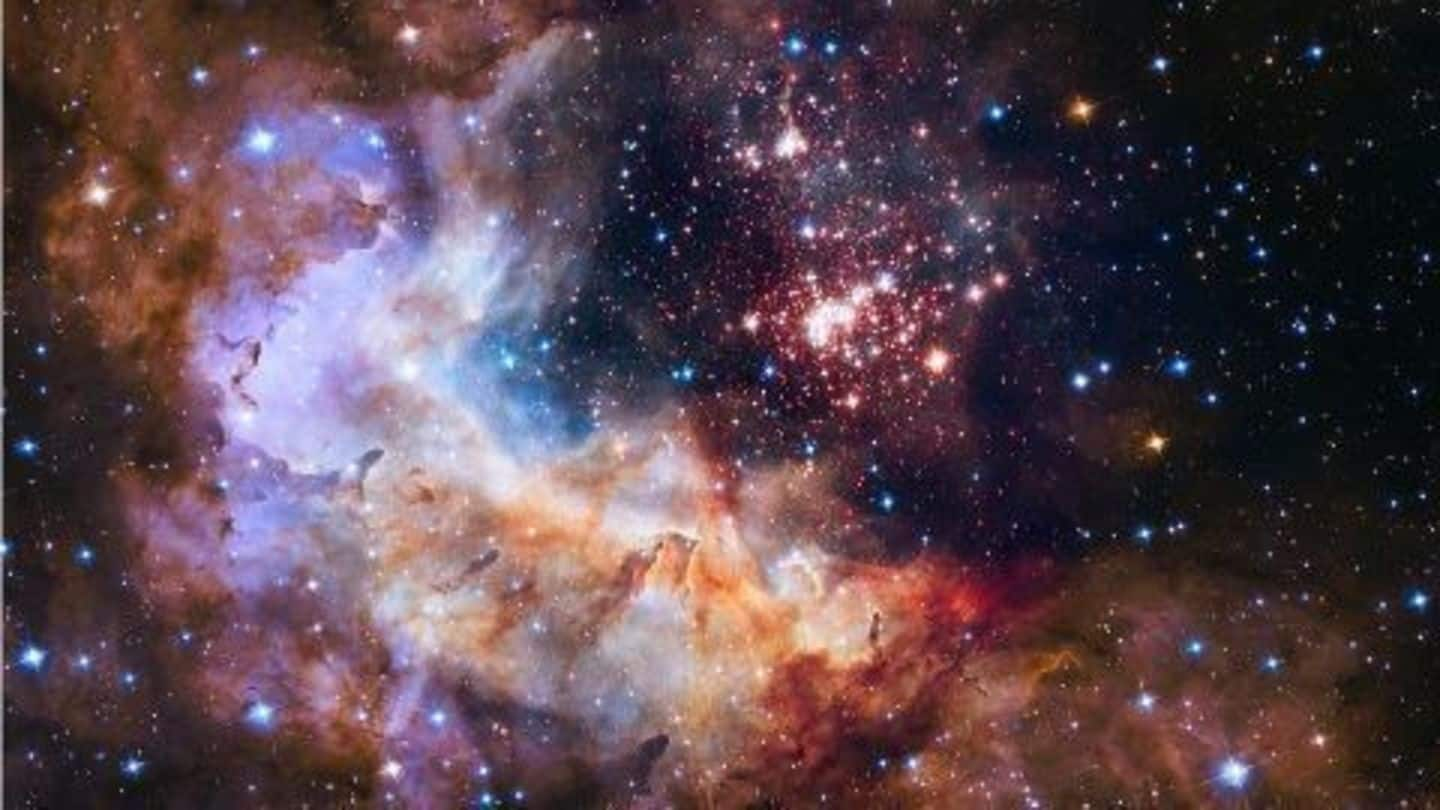
Astronomers discover the most distant galaxy till date
What's the story
NASA announced that astronomers used Hubble telescope to spot a galaxy that was formed 400 million years after the Big Bang explosion, the most distant galaxy found to date.
The galaxy, named GN-z11, is located at a record 13.4 billion light-years from Earth in the direction of the constellation Ursa Major.
GN-z11 contains about 1 billion times the mass of the sun.
Hubble
What is Hubble Space Telescope meant for?
Hubble Space Telescope (HST) is a space-based telescope that was launched in 1990.
Hubble orbits about 547 kilometers above Earth. It takes pictures of planets, stars and galaxies.
Hubble's observations expanded our understanding of star birth, star death, and galaxy evolution, and has helped move black holes from theory to fact.
HST's observations also helped in accurately determining the rate of expansion of universe.
Information
James Webb Space Telescope, the successor of HST
James Webb Space Telescope is the scientific successor of Hubble, designed to look back at objects formed just after the Big Bang. It is expected to be launched into space in 2018.
Information
GN-z11 smaller than our Milky Way
GN-z11 is 25 times smaller than Milky Way (galaxy that contains our solar system) with just 1% of the mass of the Milky Way's stars. However, it is growing fast, forming stars 20 times faster than the present Milky Way.
4 Mar 2016
GN-z11 initially spotted two years ago
GN-z11 was first spotted two years ago in a Hubble Space Telescope deep-sky visible light survey.
At the time, astronomers knew they were seeing something very far away, possibly as distant as 13.2 billion light-years from Earth.
Follow-up observations using Hubble's Wide Field Camera 3 (WFC3) that splits light into its component wavelengths revealed that GN-z11 was farther away than initially believed.
4 Mar 2016
How is the age of galaxy determined?
To determine the age of galaxies astronomers measure redshift or increase in wavelength to the red end of the spectrum.
The higher the redshift value, the lower the frequency and photon energy of the wave, and the older the light is determined to be.
GN-z11 measured a redshift of 11.1.
The last known distant galaxy, EGSY8p7, had a redshift of 8.68 (13.2 billion light-years).
Information
Redshift phenomenon
Redshift phenomenon is a result of the expansion of the Universe. Every distant object in the Universe appears to be receding from us and as a result its light is stretched to longer, redder wavelengths.
4 Mar 2016
What are scientists saying?
"We've taken a major step back in time, beyond what we'd ever expected to be able to do with Hubble," Yale University astronomer Pascal Oesch said in a statement.
"We see GN-z11 at a time when the universe was only 3 percent of its current age," he added.
Astronomer Garth Illingworth from University of California said, "We're seeing this galaxy in its infancy."